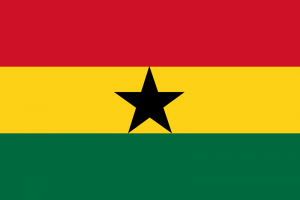Language/Twi/Grammar/Past-Tense
Introduction
In this lesson, we will learn how to form the past tense of Twi verbs and practice using them to talk about past events and experiences. It is essential to study the past tense since it is utilized to communicate actions, events, and states that happened before the moment of speaking or writing.
The Basics of the Twi Past Tense
In Twi, the past tense is primarily created by changing the vowel structure of the verb or adding specific verb suffixes. However, a few irregular verbs do not follow this pattern. The past tense marks that the action or event occurred previously, which may either be quite recent or far back in time. In summary, past tense is used to indicate that something has already happened.
Forming the Twi Past Tense
In Twi, the past tense is created by adding specific suffixes to a verb base, which reflect the tense and the subject of the verb. However, it is important to keep in mind that sometimes vowel changes occur before suffixes are added. Here are the most common past tense suffixes in Twi:
| Twi | Pronunciation | English |
|---|---|---|
| -a | -ah | past-tense marker (for singular he or she) |
| -ne | -neh | past-tense marker (for singular you - polite form) |
| -foɔ/ wɔ | -foh/ woh | past-tense marker (for plural they) |
While the table above primarily showed singular and plural third-person past tense markers, it is crucial to remember that some Twi verbs may experience vowel changes before suffixes are added to the verb base. Below are some examples:
| Twi | Pronunciation | English |
|---|---|---|
| kra | krah | to scratch |
| krɛ | kreh | to have scratched (past tense of kra) |
| di | dee | to eat |
| daa | daah | to have eaten (past tense of di) |
Using the Twi Past Tense in Context
Once you become familiar with forming the past tense for Twi verbs, it is essential to understand how to use the verbs appropriately in context. You can apply the past tense when telling stories, recounting events or experiences, or just discussing what happened earlier. It is always critical to recognize and include context when using the past tense to adequately communicate a message.
Here are some examples of using the Twi past tense in various contexts:
- Twi: Me kɔɔ asɛm no nso hɔ.
- Pronunciation: Meh koh-ah ah-sim nohn-soh hor.
- English: I went there too, and the incident had already occurred.
- Twi: Ɛyɛ ada Adowa si gya.
- Pronunciation: er-yeah ah-dah ah-doh-wah see jah.
- English: Adowa danced well yesterday.
Irregular Verbs in Twi Past Tense
Although most Twi verbs follow predictable vowel-pattern changes or suffix rules when forming the past tense, some are considered irregular for not conforming. Here are some examples of frequently used irregular verbs in Twi:
- Twi: Bra bre.
- Pronunciation: brah beh-reh.
- English: Come came.
- Twi: Hwɛ sɔ, hena na ɔbɛma nso?
- Pronunciation: hweh soh, heh-nah nah oh-beh-ma n-soh?
- English: Look here, who will do it too?
Practice Exercises
Now that we have learned about the formation and use of Twi past tense, let us practice our knowledge by working through the exercises below:
Exercise 1
Provide the past tense equivalent of the following Twi verbs:
- Twi: Fa
- Twi: Pɛ
- Twi: Tee
- Twi: Sɔ
- Twi: Ma
Exercise 2
Write ten sentences using the Twi past tense about events or experiences that you had before today.
Conclusion
In conclusion, the past tense in Twi is essential to correctly communicate past events, actions or states. By practicing the various forms of regular and irregular verbs in the past tense, you can become an excellent communicator in Twi. Remember that context plays a critical role in choosing the right tense, so do not hesitate to include the necessary information in your delivery. Keep up the excellent work!

